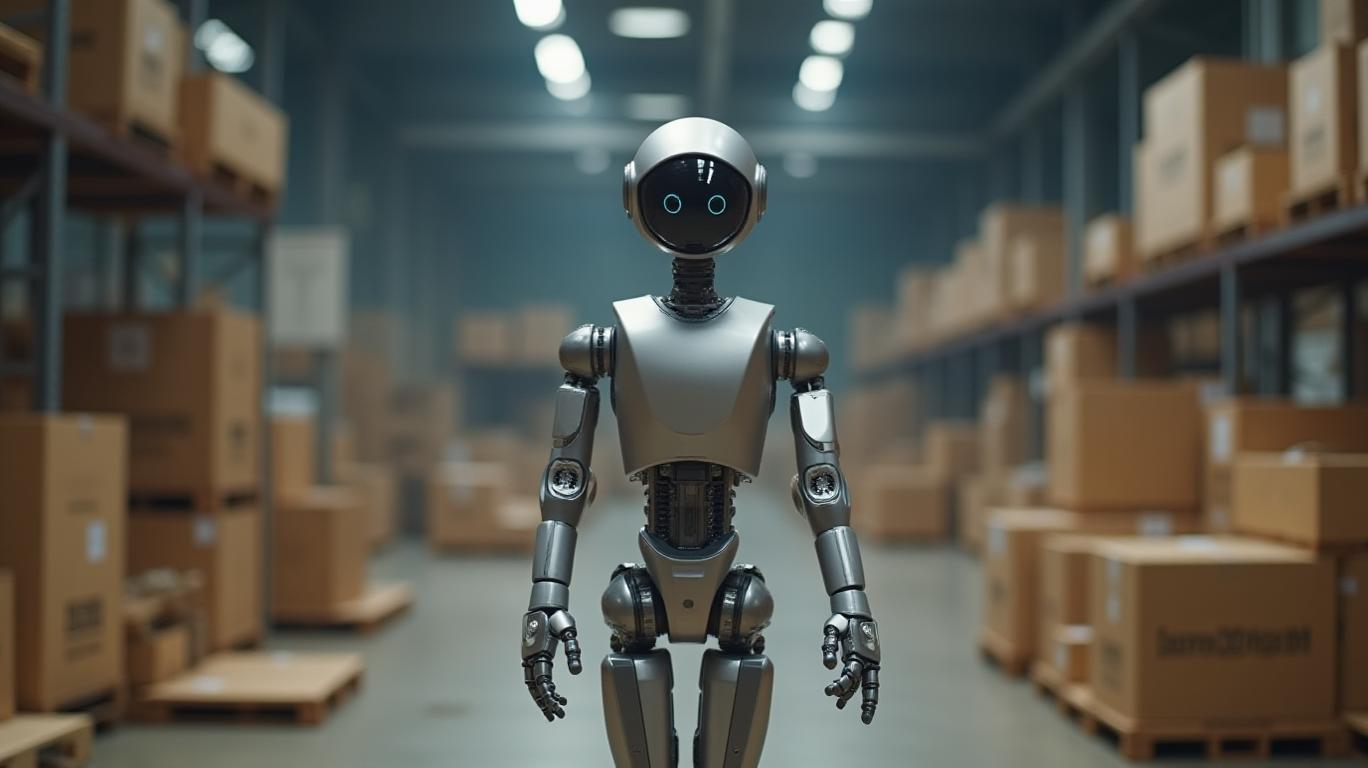NVIDIA’s GR00T N1.5: The Engine of the Robotics Revolution – Buy Now Before It’s Too Late!
The robotics industry is on the
of an explosion in commercial adoption, and NVIDIA isn’t just leading the charge—it’s building the entire highway. Today’s update to its Isaac GR00T N1.5 model isn’t just a software tweak; it’s a full-stack ecosystem play that’s redefining the economics of humanoid robotics. This is a once-in-a-decade opportunity to invest in a company that’s turning science fiction into factory reality—and doing it with a moat so wide, competitors can’t even see over it.
Why GR00T N1.5 is a Game-Changer
NVIDIA’s latest GR00T update isn’t about incremental improvements. It’s about eliminating the barriers to mass adoption:
- Synthetic Data Dominance: The GR00T-Dreams blueprint generates training data in 36 hours—a process that once took three months—using NVIDIA’s Cosmos Predict world foundation models. This slashes development costs by orders of magnitude, enabling robots to adapt to new environments in real time.
- The Self-Reinforcing Loop: NVIDIA’s ecosystem—Isaac Sim 5.0 for simulation, Jetson Thor for edge deployment, and partnerships with Boston Dynamics, Foxconn, and Disney—creates a flywheel effect. More data → better models → more partners → more data. This loop is unstoppable, and it’s already attracting early adopters like AeiRobot (industrial pick-and-place workflows) and NEURA Robotics (household automation).
How NVIDIA’s Ecosystem Crushes the Competition
The key to NVIDIA’s dominance isn’t just its AI models—it’s control of the full-stack robotics pipeline:
1. Data Generation: GR00T-Dreams eliminates the need for expensive real-world data collection. With synthetic data, companies like Lightwheel can deploy factory robots in weeks instead of years.
2. Simulation & Training: Isaac Sim 5.0 and Isaac Lab 2.2 let partners test robots in photorealistic virtual environments. This cuts time-to-market and reduces physical prototyping costs.
3. Hardware Power: The Jetson Thor platform ensures low-latency inference on robots, while Blackwell systems (e.g., DGX Cloud) handle massive training workloads.
4. Partnerships: NVIDIA isn’t just selling software—it’s building an AI-as-infrastructure platform. Partners like Foxlink (industrial robotics) and Disney (entertainment robots) are now locked into NVIDIA’s ecosystem, creating recurring revenue streams.
The result? A $150 billion market for humanoid robotics by 2030 (per McKinsey) is up for grabs, and NVIDIA is already owning the playbook.
The ROI Case: Lower Costs, Faster Profits, Higher Margins
- Cost Reduction: Synthetic data cuts R&D spend by 40-70%, while NVIDIA’s tools reduce the need for custom hardware.
- Time-to-Market: Startups and enterprises can deploy robots in months, not years.
- Scalability: NVIDIA’s ecosystem lets companies monetize pre-trained models (e.g., GR00T N1.5) with minimal customization.
This isn’t just about robots—it’s about AI-as-a-service. NVIDIA’s margins on its ecosystem will soar as partners pay for licenses, compute access, and training data.
The Risk? None That Matter (Yet)
Critics will cite competition from Google, Amazon, and legacy robotics firms. But NVIDIA’s head start in synthetic data, real-time inference, and developer mindshare makes it nearly impossible to catch. Even if rivals copy features, they can’t replicate the entire ecosystem—and that’s where the money is.
Action Now: NVIDIA is the Tesla of Robotics
NVIDIA’s stock isn’t just a play on GPUs anymore—it’s a bet on the AI-powered automation of global labor shortages. With GR00T N1.5, the company is owning the future of work, and its stock is primed to explode as industrial adoption takes off.
Buy NVIDIA now. The robots are coming, and they’ll be running on NVIDIA’s software—and so will your portfolio’s returns.
— The Cramer Take

Comments
No comments yet